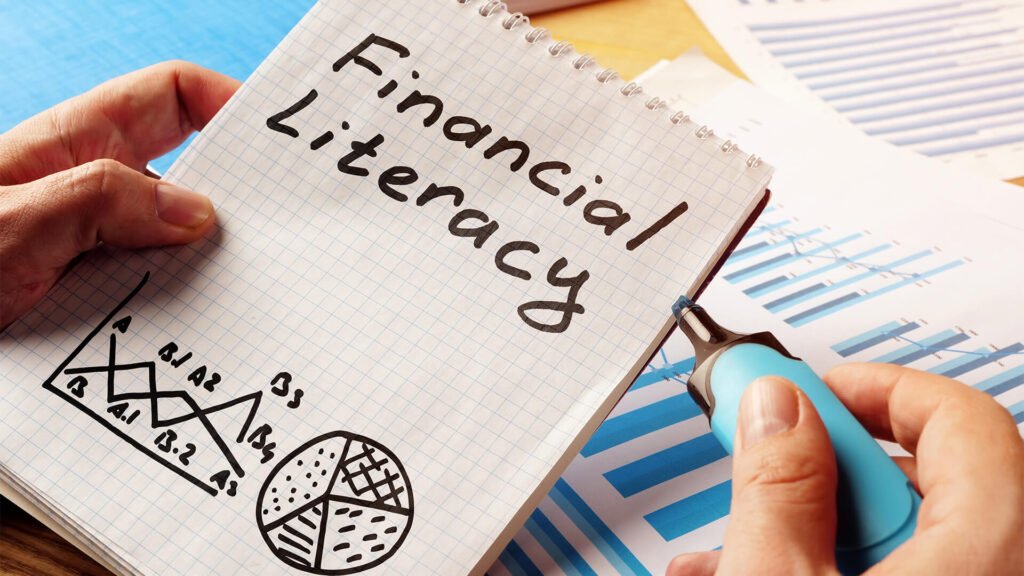Financial literacy refers to the possession of knowledge and expertise on financial matters which aids inappropriate decision making and ensures financial resources are utilized efficiently. Financial literacy plays a pivotal role in the socio-economic development of nations and the nationals thus resulting in an improvement in their collective financial state or position. As per the most recent survey conducted by UNDP in 2018, Pakistan’s 64% of the population lives below the age of 30.
Despite this, 100 million individuals in the country do not own a bank account or have access to any formal financial services for different reasons among which lack of financial literacy is the foremost one. Financial inclusion refers to the extent to which citizens are able to access formal financial services. This article aims to focus on the level of financial literacy in Pakistan and the issues that restrict its expansion. Moreover, it will also delineate the ways to elevate financial literacy thus increasing financial inclusion in the country.
It is also reported that the country is ranked very low in terms of financial inclusion indicators including savings and investments in insurance programs, participating in pension funds and mutual funds et cetera. An elevated financial literacy would encourage individuals to invest and save for long-term goals and benefits thus improving the financial position of financial institutions and the overall economy.
It’s critical to close the gap between what individuals already know and what they need to know. In Pakistan, a survey similar to the Federal Reserve’s SHED (Survey of Household Economics and Decision Making) may be done. It gathers all relevant data such as income, employment status, savings, and so on. This also aids in identifying potential financial risks to individuals. It can be conducted separately or jointly by the State Bank of Pakistan (SBP) and the Pakistan Bureau of Statistics (PBS). This data set can aid in the development of financial literacy.
It’s important to note that financial literacy is completely different from literacy. Even the rich and educated can be financially illiterate if they don’t know the potential use of their money. No such proper teaching is given regarding this type of literacy in our education system as well. Therefore, it is important to educate young minds about financial literacy so that they can manage their finances and effectively use the limited resources available. This thing should be a part of their curriculum. One such example is JumpStart i.e. a financial literacy program for the students in the US.
The government must ensure that inflation remains within an acceptable level for the average person, allowing households to put money aside for savings. It is necessary to make an effort to raise an individual’s ability to save in the form of a larger actual income, as well as to provide them with financial management expertise. The youth bulge is our most valuable asset, and if they are educated about money, they will generate enough domestic long-term savings to help the country achieve long-term economic growth. Pakistan is at a crossroads, and what we do now will define how we position ourselves for the next 30 to 40 years.
Although the State Bank of Pakistan introduced the National Financial Literacy Program in 2008 and 2012 aiming to improve financial education, there are still some gaps that need to be filled and efforts to be enhanced in order to increase financial literacy among the people of Pakistan. So to improve the financial eco-system, the SBP has directed the National Institute of Banking & Finance to initiate another program known as the National Financial Literacy Program for Youth (NFLP-Y) which looks forward to providing and enhancing financial understanding and money-management capabilities among the youth of Pakistan, especially school-going children. The primary target group of this program includes school-going children (aged 9-12), adolescents (aged 13-17), and youth (aged 18-29) across 45 districts of Pakistan.
Such a program was direly needed in order for a boost in financial planning and system thus supporting the shaky structure of the Pakistani economy. It has also elevated financial inclusion within the country hence improving the understanding of financial matters and concepts involved in various financial products and services among the youth of Pakistan. This has and will ultimately alter the perceptions and attitudes of the young generation towards savings and investment, budgeting, managing debt, financial negotiations et cetera. Furthermore, the program should focus on including the subject of basic financial literacy in every grade’s curriculum in schools and colleges to foster a better understanding of all financial matters in individuals.

2 thoughts on “Financial literacy: A step towards financial success”
Well-written!!
Wow, delightful insights and information. Gonna join this State Bank Program soon. I loved the way you mentioned, financial literacy is completely different from literacy. Thank you for this amazing article.